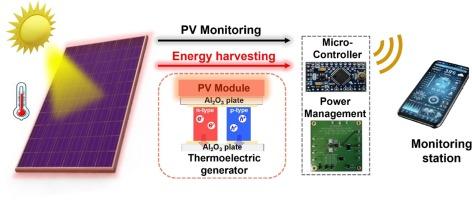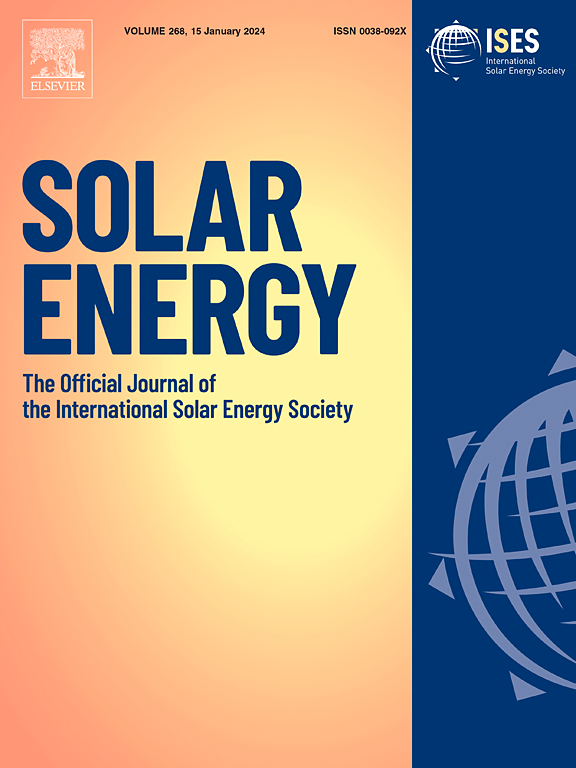利用热电发生器的自供电无线传感器系统,用于光伏组件监测应用
IF 6
2区 工程技术
Q2 ENERGY & FUELS
引用次数: 0
摘要
在这项工作中,我们展示了一种自供电无线光伏模块监控系统,该系统利用热电发生器 (TEG) 将光伏模块的剩余热能转化为电能。我们研究了带散热器和不带散热器的 TEG 性能。结果表明,在热侧温度为 50 °C 时,有散热器的 TEG 冷热侧温差增至 7.2 °C,而无散热器时仅为 1 °C。我们将 TEG/散热器与作为热源的光伏模块集成在一起,在 3.6 °C的温度梯度条件下,实现了 0.06 V 电压下 0.981 mW 的最大输出功率。我们成功演示了一种自供电无线光伏监测传感器系统,该系统集成了升压转换器、微控制器、红外测温仪、蓝牙通信模块和 TEG/散热器,可产生足够的电力供监测系统运行。研究结果为无线光伏模块监测引入了一种新颖的解决方案,它的运行不受电网连接或电池供电的影响。这一创新不仅标志着可再生能源管理的进步,也为物联网(IoT)领域带来了新的机遇。本文章由计算机程序翻译,如有差异,请以英文原文为准。

Self-powered wireless sensor system utilizing a thermoelectric generator for photovoltaic module monitoring application
In this work, we demonstrate a self-powered wireless PV module monitoring system that utilizes a thermoelectric generator (TEG) to convert residual thermal energy from the PV module into electrical power. We investigated the TEG performance with and without the heat sink. Results show that the temperature difference between the hot and cold sides of the TEG increased to 7.2 °C with the heat sink, compared to only 1 °C without it, at a hot side temperature of 50 °C. We integrated the TEG/heat sink with the PV module, which served as the heat source, achieving a maximum output power of 0.981 mW at a voltage of 0.06 V under a temperature gradient of 3.6 °C in a 1 sun condition. We successfully demonstrated a self-powered wireless PV monitoring sensor system by integrating a step-up voltage converter, microcontroller, IR thermometer, Bluetooth communication module, and the TEG/heat sink, which generated sufficient power for the monitoring system operation. The findings introduce a novel solution for wireless PV module monitoring that operates independently of grid connections or battery power. This innovation not only signifies advancements in renewable energy management but also opens new opportunities in the Internet of Things (IoT) sector.
求助全文
通过发布文献求助,成功后即可免费获取论文全文。
去求助
来源期刊

Solar Energy
工程技术-能源与燃料
CiteScore
13.90
自引率
9.00%
发文量
0
审稿时长
47 days
期刊介绍:
Solar Energy welcomes manuscripts presenting information not previously published in journals on any aspect of solar energy research, development, application, measurement or policy. The term "solar energy" in this context includes the indirect uses such as wind energy and biomass
 求助内容:
求助内容: 应助结果提醒方式:
应助结果提醒方式:


